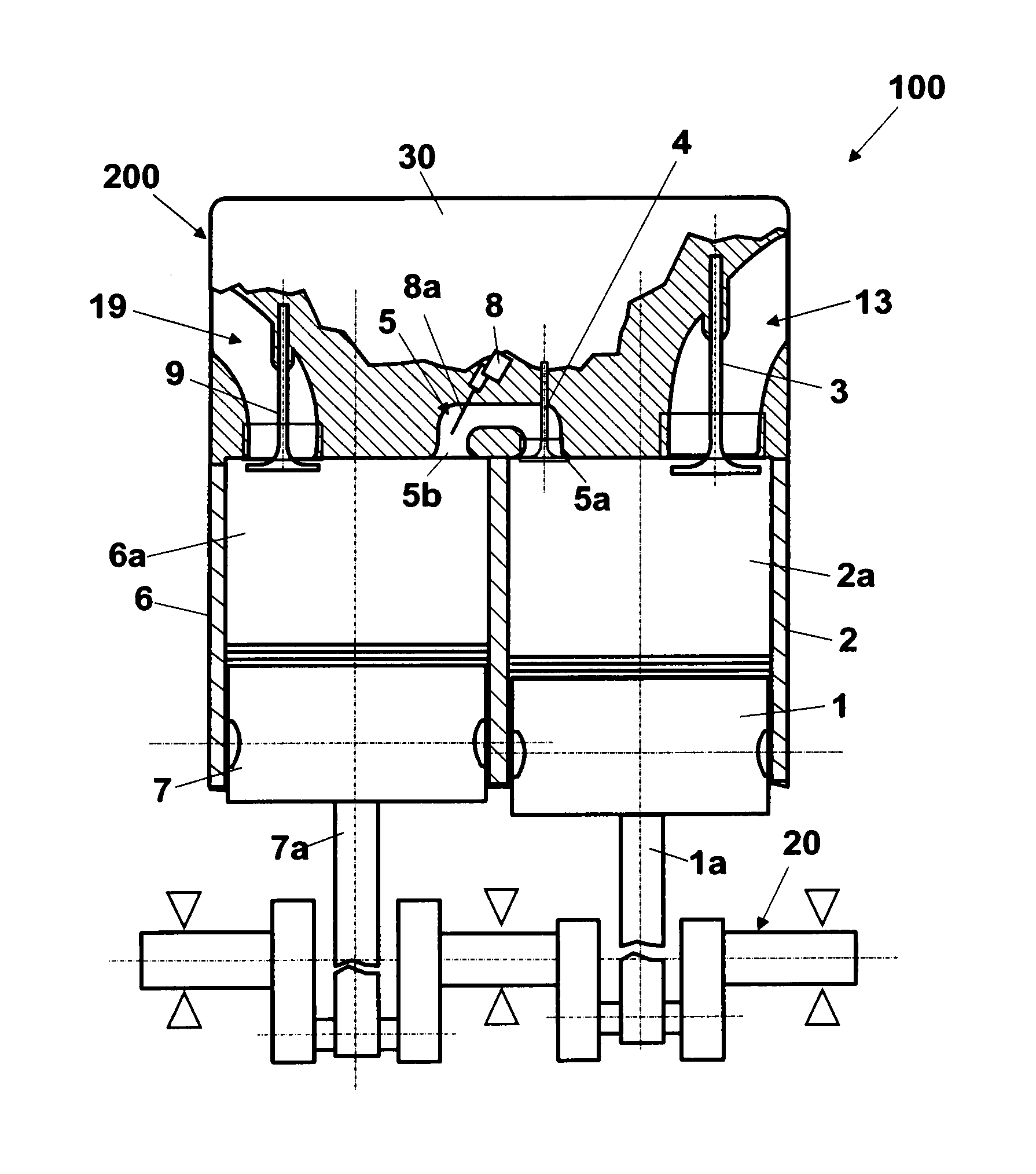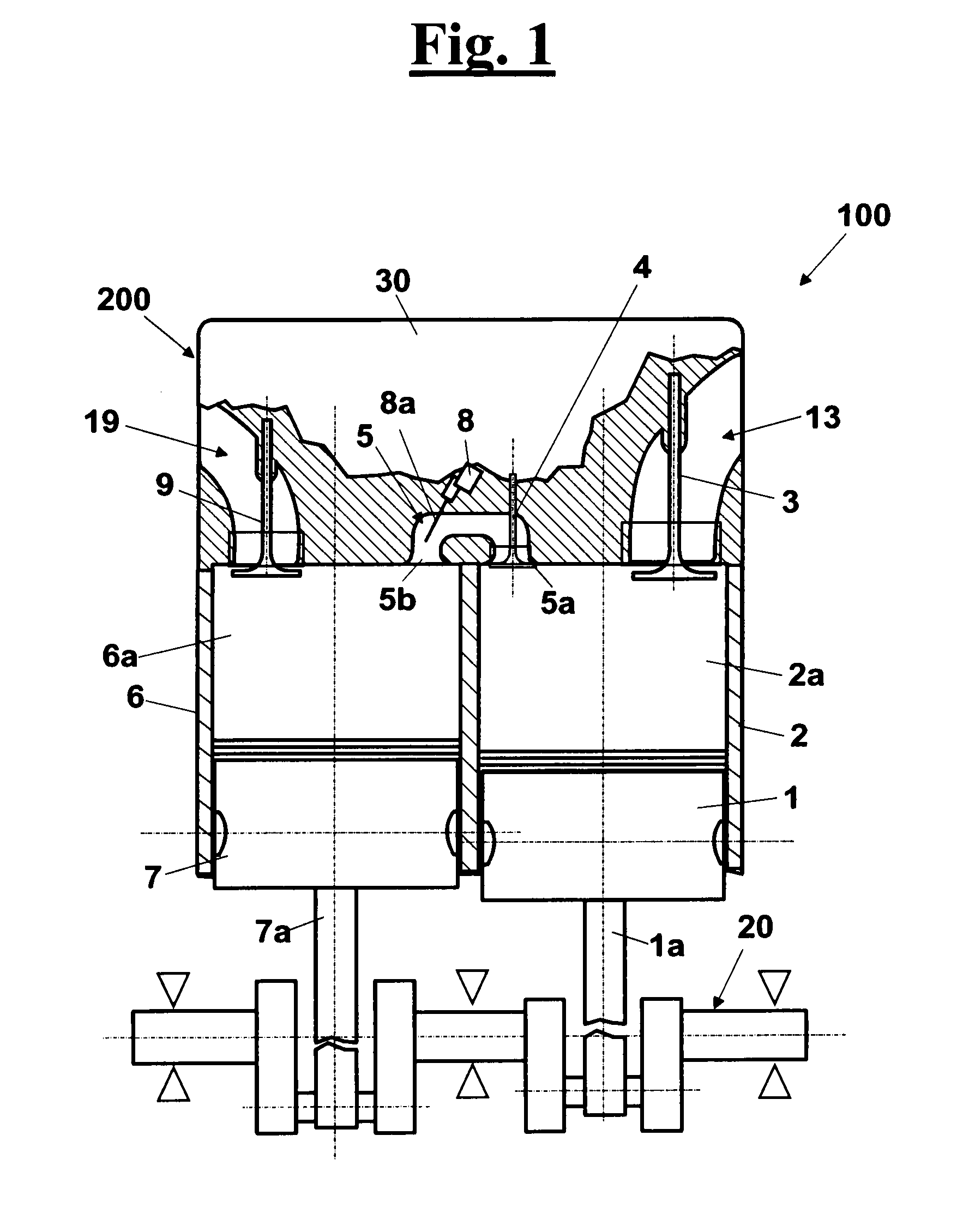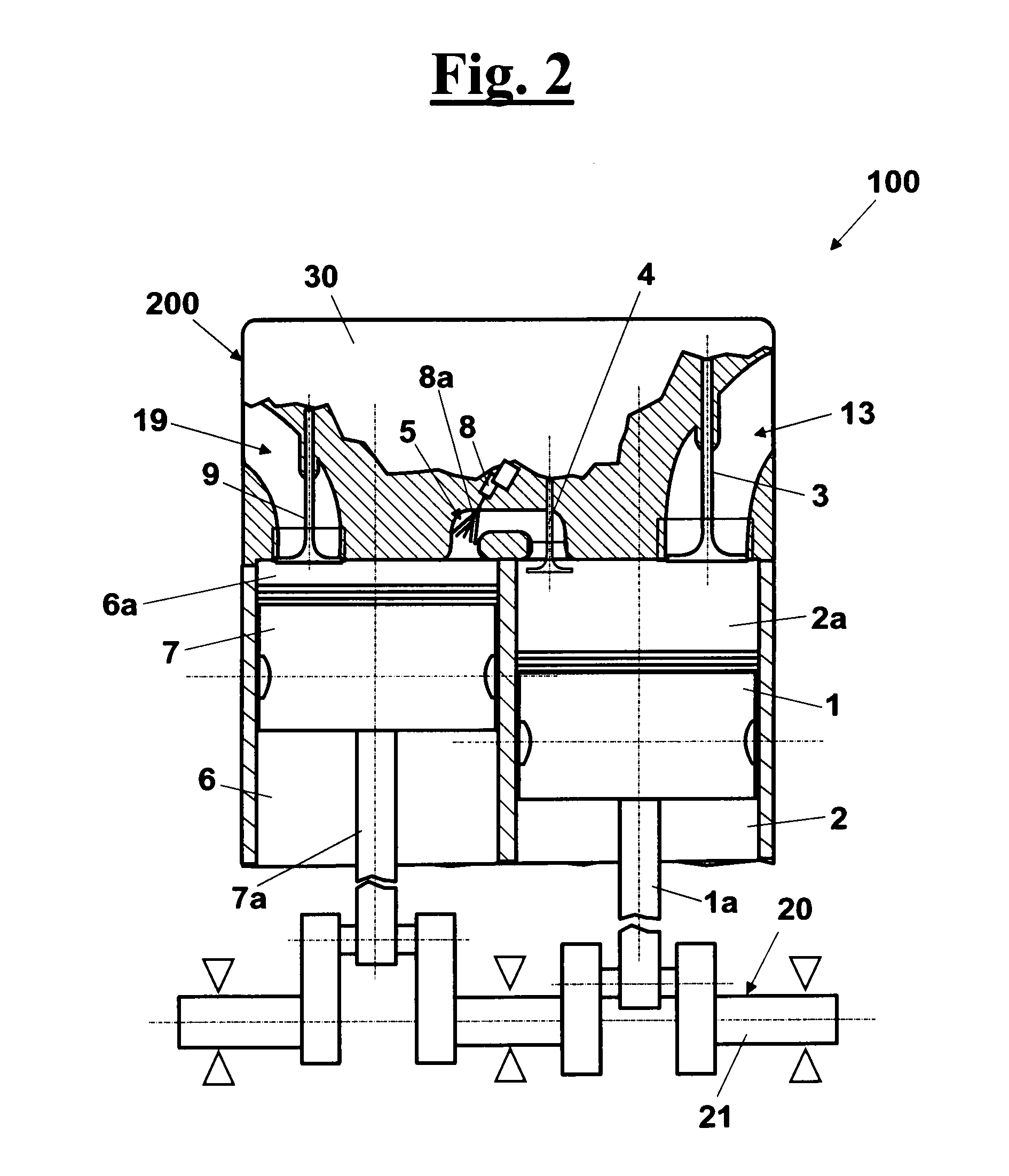Split-cycle engine
a split-cycle engine and compression-ignition technology, which is applied in the direction of combustion engines, fuel injection apparatus, charge feed systems, etc., can solve the problems of high mechanical stress, noise, and high pressure gradient in the combustion phase, and achieve the effect of low dust emissions
- Summary
- Abstract
- Description
- Claims
- Application Information
AI Technical Summary
Benefits of technology
Problems solved by technology
Method used
Image
Examples
Embodiment Construction
[0055]With reference to FIGS. 1 and 2, a compression-ignition “split-cycle” engine 100, according to the invention, comprises a cylinder block 200 with an expansion cylinder 6 associated with a relative expansion piston 7 that is adapted to move alternatively between a top dead center (ETDC) and a bottom dead center (EBDC) in expansion cylinder 6 by means of a crankshaft mechanism 20. In particular, crankshaft mechanism 20 causes a predetermined position of expansion piston 7 to correspond always to a predetermined crankshaft angle. In particular, as shown in FIG. 3 the ETDC of expansion piston 7 corresponds to a crankshaft angle of 0°.
[0056]Furthermore, cylinder block 200 comprises a compression cylinder 2 associated with a relative compression piston 1 that is adapted to move alternatively between a top dead center (CTDC) and a bottom dead center (CBDC) in compression cylinder 2 according to a predetermined delay with respect to the crankshaft angle of the expansion piston 7. Comp...
PUM
 Login to View More
Login to View More Abstract
Description
Claims
Application Information
 Login to View More
Login to View More - R&D
- Intellectual Property
- Life Sciences
- Materials
- Tech Scout
- Unparalleled Data Quality
- Higher Quality Content
- 60% Fewer Hallucinations
Browse by: Latest US Patents, China's latest patents, Technical Efficacy Thesaurus, Application Domain, Technology Topic, Popular Technical Reports.
© 2025 PatSnap. All rights reserved.Legal|Privacy policy|Modern Slavery Act Transparency Statement|Sitemap|About US| Contact US: help@patsnap.com



